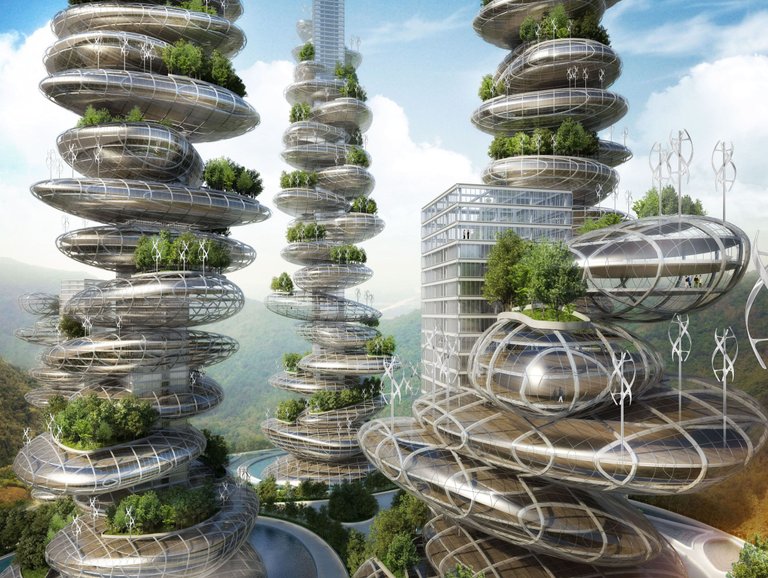Have you ever wondered what the maximum possible biodiversity on Earth was?
Have you ever entertained that possibility coming true by the hands of human devotion?
In geological vernacular a time during the furthest spread of the ice age, called a ‘glacial maximum’, is when the polar ice sheets have reached their furthest equatorial reach. I am referring to ‘A Biological Maximum’ as a period when ecosystems reach their most diverse potentials.
When you consider how the most biodiverse regions of our planet maximize solar juice (photon power) to create biology, you notice that things are ‘super-stacked’. Meaning there are many layers and hierarchies that attach themselves to circular flows and webs of energy. This reveals itself through predator-prey relationships of every organism type imaginable. So what we should primarily be investigating and applying is vertical design in our neighborhoods and cities. Today we are very good at organizing living spaces into vertical arrangements but we haven’t really begun to apply this to living biological environments.
Dickson Despommier recently published the book, The Vertical Farm, which outlines the potentials of vertical farming on an industrial scale. However his book is, because it is a fairly fresh concept, quite simple. It’s almost the ‘Henry-Ford’ level thinking of efficiency, meaning basic. I have hopes that he will expand upon this idea. If we could take his concepts and blend them into the ‘Ecocity’ designs of Richard Register we could commence a renaissance of green-urbanism in the proceeding decades.
How can the ideas of the vertical wall lattice be taken to it’s full expression, it’s full potential? If it’s goal is to make use of unused space in on our home architectures than how can a medley of plants share it’s space all the way to the top of a high-rise structure? What if every floor, of our human inhabited buildings, was made to be able to supply all the fruits, nuts, vegetables, and herbs it’s people needed/desired. I like to imagine a future wherein the artistic expression of architects shifted from paint colors to living patterns.
So with cities that fully maximized their urban cores with edible patterns, how would the hinterlands and surrounding areas be allowed to express their perennial tree crops? How can the valleys, both lush and arid, be able to feed massive herds with locally precocious trees? If we can start to create more participatory cities we can begin a redirection of our culture to a biological maximum which should prove very fruitful for our survival...

Congratulations @geisty! You have completed some achievement on Steemit and have been rewarded with new badge(s) :
Click on any badge to view your own Board of Honor on SteemitBoard.
For more information about SteemitBoard, click here
If you no longer want to receive notifications, reply to this comment with the word
STOP